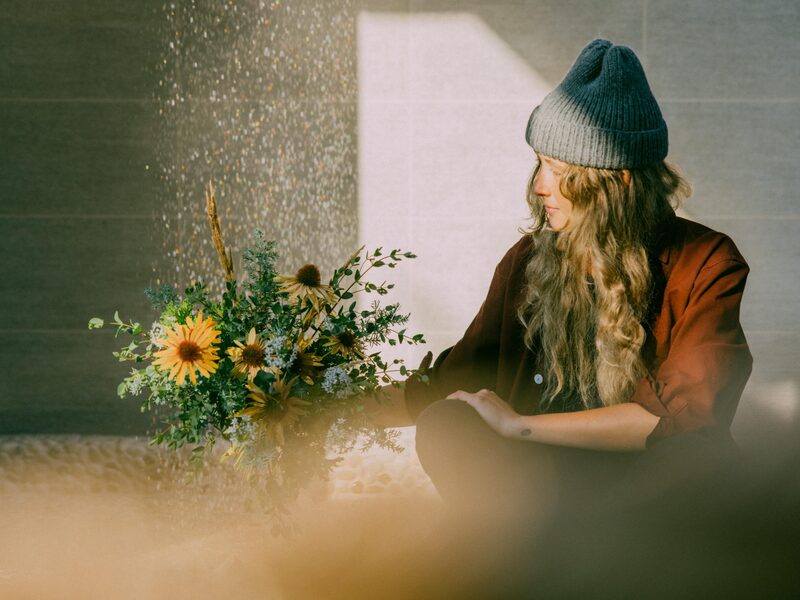
A Ritual for All Five Senses
Guided by her thermal spa experience at Nordik Spa-Nature in Chelsea, floral artist Leah Gibson composes a spontaneous bouquet on the premises.
Text & Photos – Catherine Bernier
In partnership with BESIDE

6:45 a.m., centre of Old Chelsea. The sun rises above the mountains overlooking the site of Nordik Spa-Nature — the largest spa in North America — where I meet the floral artist Leah Gibson, her face illuminated by ribbons of autumn light.
This morning, Leah has traded her lush property in rural Ontario for a garden where thermal contrasts dominate. I watch her get acquainted with the place, enlivened by the sound of water stirring in the outdoor pools and the wafts of floral scents from thriving native plants: “A perfect recipe for inspiration and relaxation,” she observes.
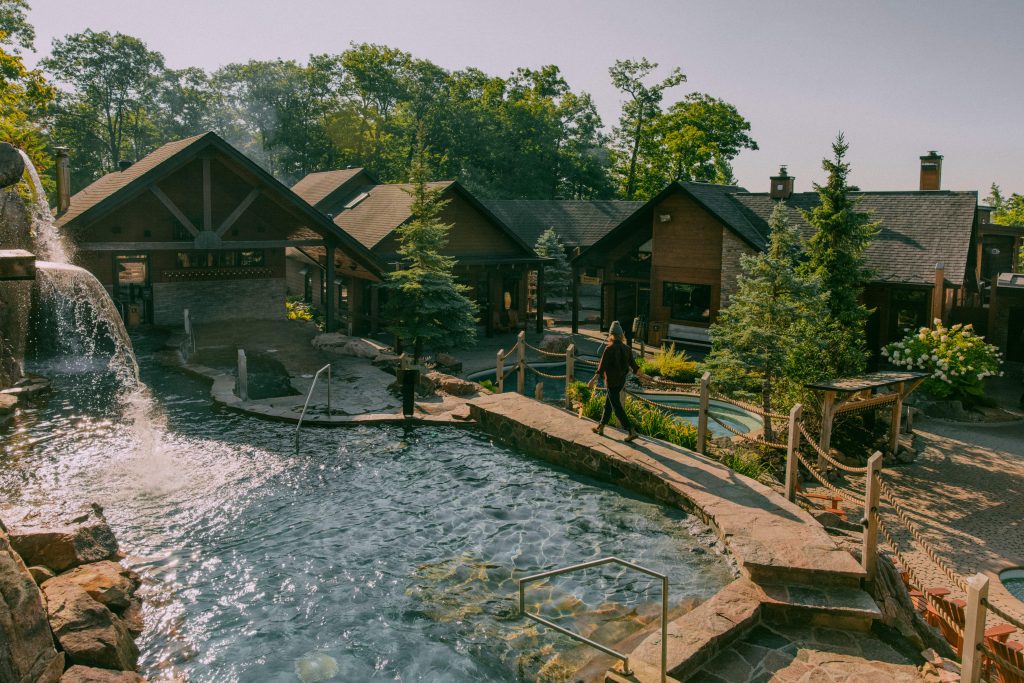
Leah has brought a bucket with geraniums and alliums from her garden, as well as silver dollar eucalyptus found at a local producer. Beyond these three species that will form the base for the bouquet she will design on site, she has carte blanche to choose from the plants she finds at the spa.
The horticulturist is known for her intuitive — and sometimes edible! — arrangements made with plants and mushrooms, reminiscent of wild landscapes. For the length of a day, the Nordik Spa-Nature will become her sensory laboratory: a golden opportunity to find the creative spark in proximity to nature and the experience of thermotherapy.
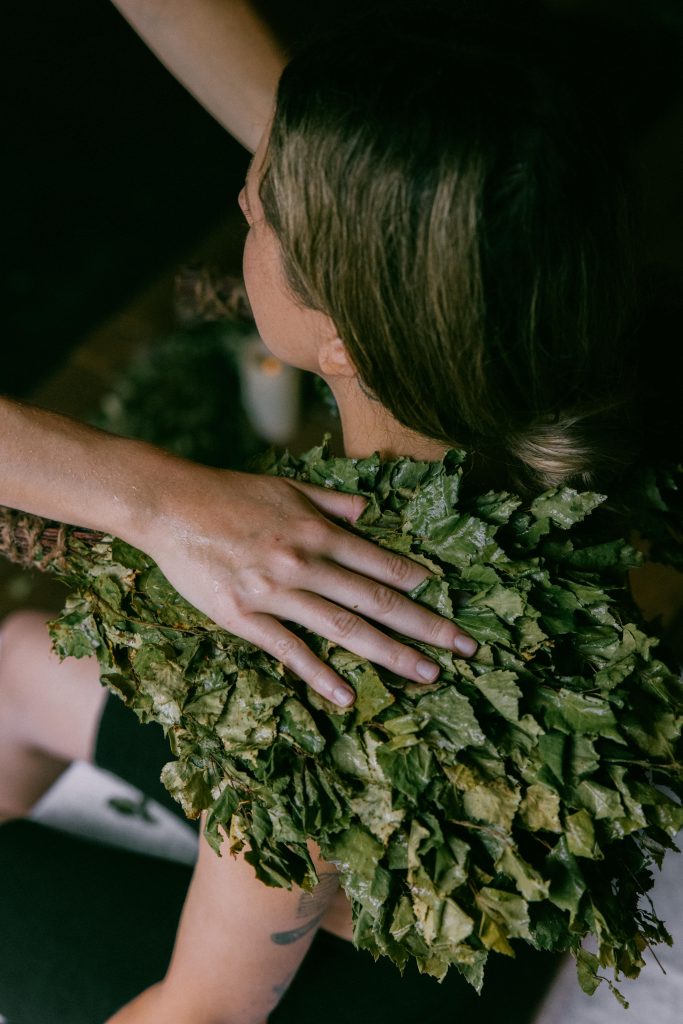
The Beauty of Contrasts
Leah is invited first to experience the benefits of the thermal cycle, a treatment that involves alternating between hot and cold followed by a period of rest — a ritual of relaxation stemming from two thousand years of tradition, anchored in Nordic countries.
The effects of thermotherapy on physical and psychological health are both immediate and lasting; research shows that a regular practice helps improve sleep, stimulate the immune system, improve circulation, tone the skin, and encourage the absorption and digestion of foods. Doctors sometimes recommend thermotherapy to injured patients or those with chronic pain, rheumatism, or arthritis, to aid and accelerate healing.
Thermotherapy is also an effective treatment for mild depression, improving memory and clarity of thought and eliminating stress and tension. In short, it’s an ideal rejuvenating practice for Leah after a summer of working in her garden and creating floral arrangements for events.
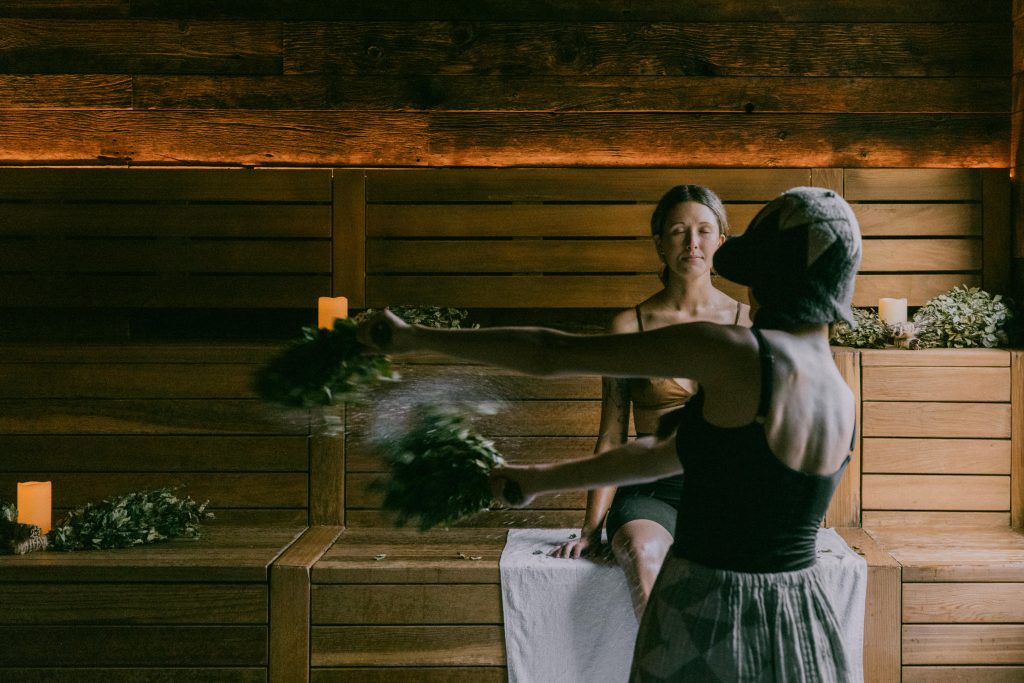
The artist continues with an Aufguss ritual offered by Bethany, a Rituals Artisan. Aufguss rituals stem from ancient German practices designed to maximize the benefits of thermotherapy using scents, atmosphere, duration, intensity, music, and choreography, all of which can vary considerably from one ritual to another. The Arboreal Aufguss Ritual offered at Nordik Spa-Nature is inspired by the Canadian boreal forest and performed with birch branches plunged in cold water.
Experimenting with heat and cold during the Arboreal Aufguss Ritual recalls Leah to the extremes of working with flowers: the hot summer’s labour giving way to the first frost that ends the harvests and signals the time to slow down. You have to accept both ends of the spectrum, she says; a gust of fresh air will always follow the heat. “Just like when Bethany opened the door at the end of the ritual,” she adds with a smile.
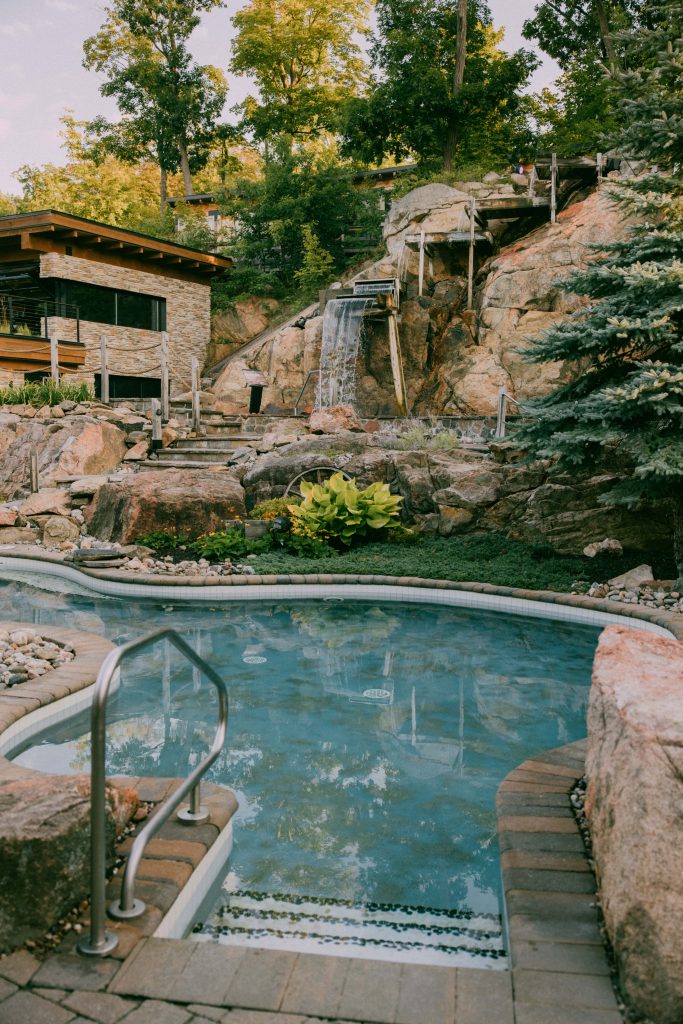
Creating from nature
Refreshed by the Arboreal Ritual, Leah walks through the site, letting herself become porous to the natural materials around her, the stone and wood, which she doesn’t hesitate to brush with her fingers. She’s also inspired by the cream and blue tones that reign here. Scissors in hand, she gathers echinacea and grasses directly from the flower beds surrounding the baths, as well as juniper branches she spotted in the spa’s wooded area.
With a confident gesture, Leah places asymmetrical stems on a table. “I went with a muted colour palette to match the surroundings at the spa,” she explains. “The peach of the echinacea; the white of the allium with its bursts of florets; the soft, silver-toned greens of the foliage; the harsher visual effect of the juniper with its spherical, cool-blue berries; and some floaty Karl Foerster grass.”
Under the artist’s agile hands, these distinct specimens are joined together into harmonious contrasts, embellished with a naturally dyed silk ribbon. On the ground, ends of stems and bits of leaves gather in an elegant pile reminiscent of the birch branches used during an Arboreal Ritual: “A necessary mess I allow myself to make when arranging flowers or working in the garden,” says Leah.

Leah ends her experiment by plunging her floral arrangement (and herself) into a pool in the shape of an aquarium. Instinctively, she makes the bouquet dance under a show of lights, turning the petals, quickened by the cold, to a golden hue.
As she splashes down in the water, I’m reminded that playing with elements of nature — their contrasts as well as their alliances — is an inspired way of soothing and stimulating the senses.
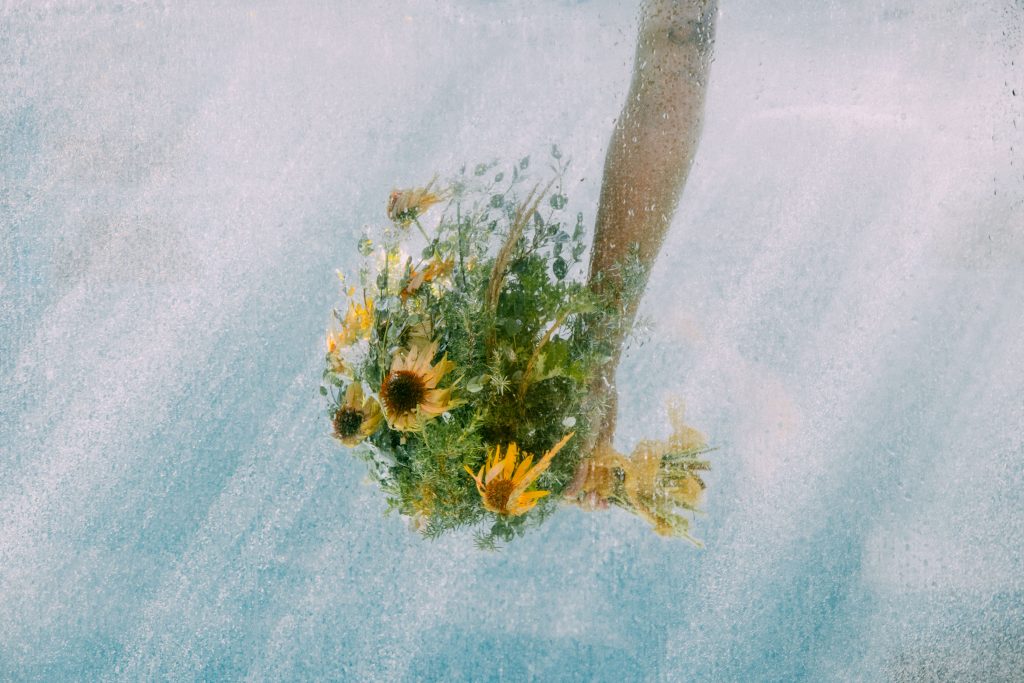
Before leaving, I ask Leah to tell us about her intuitive approach and her daily rituals for self-care.
You mentioned that water and flowers are your favourite natural elements to connect together. Why? And how does this translate to your practice?
We are over 50 per cent water. Flowers require water to grow and thrive. It just feels like a very natural connection. Watering my gardens is a therapeutic ritual, and getting to arrange flowers next to water just feels very full-circle. I love the unsettled, almost chaotic feeling of the waves on a lake together with the gentleness that flowers bring, or the rush of a spring waterfall pounding on petals.
How much importance do you give to each sense in your intuitive designs?
I aim to design with flowers in a way that creates an experience combining the senses beyond a simple bouquet. I want to encourage folks to think about nature in a very intentional way. For example, I’ll play with colour combinations, negative space, unexpected elements, and asymmetry to mimic the growth of landscapes. Texture is so important when arranging, to create an intriguing experience both visually and tangibly!
I also love incorporating edible flowers, fruit, and mushrooms into my pieces. The intersection of beauty and taste feels utilitarian and fun. I think this can enhance the experience by making people see beauty in their mundane groceries. Maybe next time they reach for a pear at the market, they’ll think of a still-life painting or a floral centrepiece.

Do you incorporate downtime in your personal rituals to cultivate creativity and well-being?
Absolutely. Winter is a time to hunker down, learn, and scheme toward the upcoming season, while summer is a lot more frenzied with plans. I do still think it’s important, especially when working in a creative field, to carve out the time for well-being in order to be able to create from a space of inspiration rather than depletion.
Downtime for me is prioritizing my sleep schedule, saying no to things that don’t resonate, designing something just for myself, stretching and moving my body, and going for regular swims.
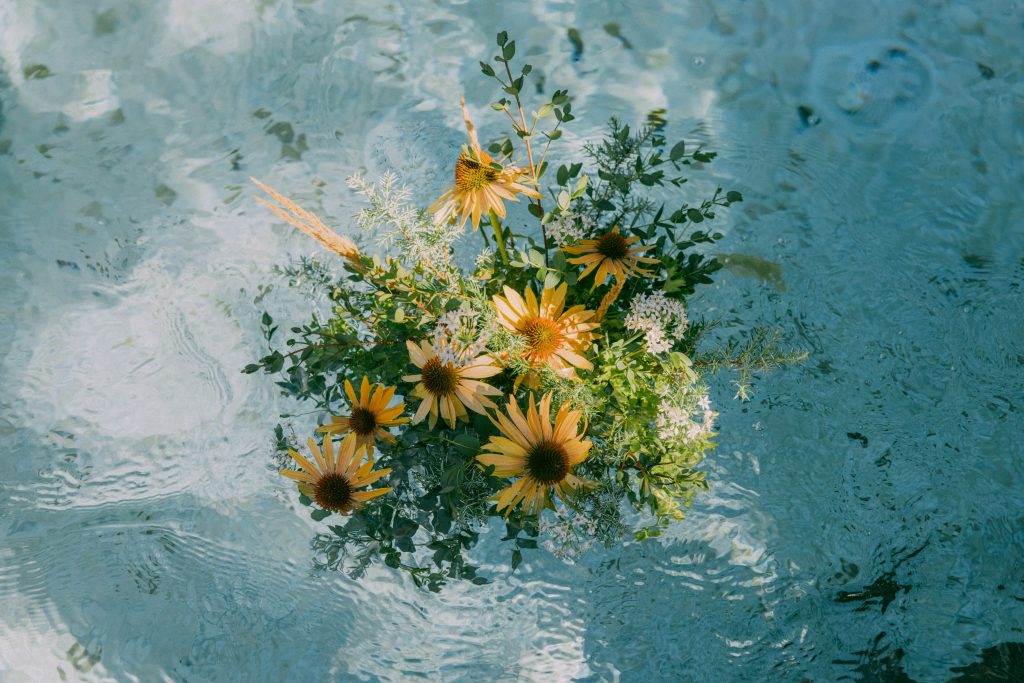
Catherine Bernier is a creative director, a freelance writer and photographer, and co-founder of The Parcelles, a seaside retreat for artists in residence in Nova Scotia. The influence of nature and culture on human choices and stories remains one of her core interests.
Nestled in the picturesque village of Old Chelsea in Outaouais on the outskirts of Gatineau Park, Nordik Spa-Nature is the largest spa in North America.
The spa, which opened in 2005, offers a multisensory experience in a natural setting, with the goal of improving guests’ health and well-being. The centre focuses on thermotherapy techniques, and includes ten outdoor baths, nine saunas, an infinity pool, a saltwater flotation pool and numerous relaxation areas.